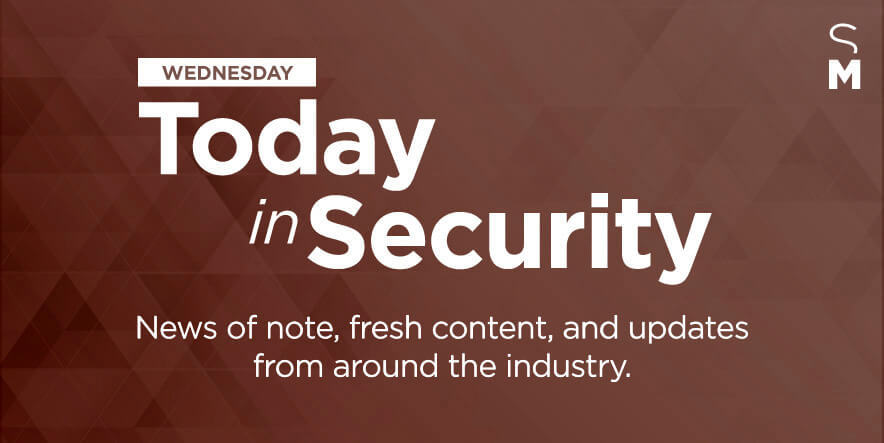Globalization Drives Disconnect in Corporate Anti-Corruption Efforts, Report Finds
The cost of bribery keeps rising. Approximately 1 percent of the global GDP—or $1.75 trillion a year—is lost to bribery, according to Kroll’s annual Global Fraud and Risk Report (GFRR).
Despite large organizations’ ongoing efforts to bolster their corruption defenses, 57 percent of large companies (those with a turnover of more than $15 billion) reported “very significant” impacts from corruption, fraud, and other illicit activity; and an additional 25 percent described those activities’ impact as somewhat significant.
Survey respondents for the GFRR ranked the Middle East and North Africa (61 percent), Sub-Saharan Africa (59 percent), Latin America (49 percent), and Asia Pacific (43 percent) as the top regions for the threat of bribery and corruption. Western Europe was ranked lowest on the list, with only 25 percent of respondents including it in their top three regions of concern.
U.S. companies are increasingly focused on proactive measures to mitigate corruption risk, including enterprise-wide risk assessments (89 percent) and using proactive data analytics (91 percent), according to Kroll.
“Technology, particularly data analytics technology like natural language processing (NLP), is giving companies greater visibility into potentially risky behavior,” Rich Plansky, North America regional managing director for Kroll’s forensic investigations and intelligence practice, tells Security Management. “More than ever before, commercially available tools can help companies model problematic behavior and find such behaviors by applying those models to large volumes of data—emails, chats, expense reports, transactional records—that would be far too voluminous for any one person to absorb. This allows smart, strategic companies to focus their limited compliance resources on the areas that are most likely to carry bribery and corruption risk.”
90% of the senior risk professionals we surveyed believe their anti-bribery and corruption (ABC) risks will increase or stay the same this year.
— Kroll (@KrollWire) September 9, 2021
Explore our ABC Benchmarking Report for more insights: https://t.co/COySLGDuL6 pic.twitter.com/EHFZEt7UVs
Adoption of data analytics for corruption and bribery detection and response is particularly high in the Asia Pacific region, the report found, with China (98 percent), Singapore (97 percent), and India (92 percent) leading the pack, followed by the United Kingdom (91 percent) and the United States (91 percent).
Despite the advanced tools, though, 82 percent of survey respondents said corruption is still significantly impacting their organizations.
Globalization—which can amplify disconnects between senior management teams and the reality of local business practices—may be exacerbating the problem, especially as complex international supply chains must contend with myriad third-party suppliers that could have their own approach to ethics and business practices. According to the GFRR findings, 46 percent of respondents said a lack of visibility over third parties, such as suppliers, customers, agents, and distributors, is the leading source of bribery and corruption risk.
“Organizations are paying more attention to corruption in their supply chains because, after 2020, every business understands how frail and interdependent its supply chain is,” Plansky says. “There is also well-founded concern that there will be increased enforcement from the Biden Administration, which has made corruption a priority, going so far as to issue an executive order on the subject in the president’s first six months in office.
“We have found that, while supplier self-certifications are a start, requiring audit rights and conducting periodic audits—especially of suppliers in high-risk geographies—is the best way for a company to truly understand its suppliers,” Plansky continues. “That, coupled with due diligence that includes media searches and background reviews of ultimate beneficial owners, profoundly reduces the risk of dealing with a corrupt enterprise.”
The GFRR states that the main drivers of a successful anti-bribery and corruption program include a strong commitment from senior management to implement an ethical culture; properly understanding risk across the organization; developing a robust control framework; and using data analytics to identify and assess changing risks inside and outside the enterprise.
“Hasty COVID-19 Responses Open Windows for Corruption,” The wide scale of the coronavirus pandemic, which has touched six continents, presents a wide stage for corruption, backroom deals, and fraud. https://t.co/l2QAVqIq2C @SecMgmtMag #security
— ASIS International (@ASIS_Intl) August 17, 2020
Board-level involvement in culture and ethics is essential, the report found, and respondents report a growing focus on corruption in the boardroom. More than 70 percent said the challenge is being given sufficient board-level attention and investment. However, there remains a divide between the goals of senior managers and the reality on the ground.
“In the words of Peter Drucker, ‘Culture eats strategy for breakfast,’” Plansky adds. “A corporate culture that values, measures, and incentivizes compliance is a culture that effectively mitigates corruption risk. That type of culture starts at the top, with the example set by leadership—walking the walk as well as talking the talk. It is communicated to the staff through clear policies offering general guidance in the form of principles and specific guidance in the form of rules governing employee behavior. It is supported by providing resources that actually help employees find their way to compliance. And, finally, it is bolstered by imposing accountability for breaches at all levels.”
The cost of not investing in anti-corruption measures is climbing, which puts pressure on organizations to ramp up their efforts.
“The cost of corruption is getting dramatically steeper,” Plansky says. “Enforcement risk is higher, the cost of investigations is rising, and penalties for offenders are likely to be more severe under the Biden Administration. The only thing that hasn’t changed is the reputational risk, which is, was and will always be existential for most companies.”
